Biography
Born in Cleveland, Ohio, Dorothy Dehner did not start sculpting until 1955, when she was fifty-four years old. As a teenager, she studied painting with three artistically inclined aunts and dance with a former member of the Denishawn Company, a modern dance troupe and school. By the time she was eighteen, Dehner had lost both of her parents and her only sister. She moved to California to study acting, taking classes at the Pasadena Playhouse and majoring in drama at the University of California, Los Angeles. In the mid-1920s, Dehner moved to New York, where she studied at the Art Students League and met several artists, among them, David Smith. They married in 1927 and lived in Brooklyn.
In 1929, Smith bought an eighteenth century farmhouse at Bolton Landing, in upstate New York, where the couple spent summers before moving there full time in 1940. During their marriage, Dehner drew, painted, and participated in group shows. She also ran their household, assisted Smith with his work, and advised him about his sculptures. In 1948, he translated her drawing Star Cage into a sculpture. Although Dehner was passionately pursued art, her career ambitions always took a back seat to those of her husband, who could be demanding and domineering at times. Dehner addressed her conflicted feelings about Bolton Landing and their marriage in two series of drawings: Life on the Farm, idyllic representations of everyday life, and Damnation Series, featuring “demonic figures surrounded by vultures and bats. . . . Only years later did she realize how much these drawings expressed the increasing psychological discomfort she felt in the waning years of their marriage.”†
In 1951, Dehner divorced Smith, left Bolton Landing, and moved back to New York City. She studied painting at Stanley William Hayter’s Atelier 17, where she met sculptors Louise Nevelson and David Slivka. In 1953, her work was included in exhibitions at the Museum of Modern Art and the Metropolitan Museum of Art, New York. In 1955, Dehner made her first sculpture. Her earliest sculptures
were small, surrealist-influenced bronzes, which she cast using the lost-wax process. According to her, “I was never taught sculpture at all; nobody told me anything. I didn’t need it. The minute I had [the wax] in my hands, I knew what to do.”‡ Her work rapidly gained recognition; in 1955, she had a solo exhibition at the Art Institute of Chicago, and in 1957, she joined the prestigious Willard Gallery.
Dehner periodically worked in bronze throughout her career, but in the 1960s, she also began to sculpt in other media, and over the decades, her work grew in scale as well. After the death of her second husband in 1974, Dehner began creating wood sculptures as high as ten feet, and employing a fabricator, she also produced large-scale works in Corten steel. Like the painter Alma Thomas, Dehner found her artistic voice at a later stage in life, and also like Thomas, she more than made up for lost time, earning recognition and awards, and remaining prolific until a pharmacist error rendered her blind shortly before her death. She was a visiting artist at the Tamarind Lithography Workshop in 1970-1971. In 1981, Skidmore College gave her an honorary doctorate, and the following year, she received an award from the Women’s Caucus for. She was also the subject of major retrospectives at the Jewish Museum in New York (1965), City University of New York (1991), the Katonah Museum of Art (1993), and the Cleveland Museum of Art (1995).

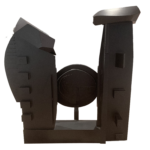 Untitled
Untitled
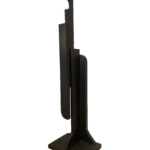 Fist
Fist
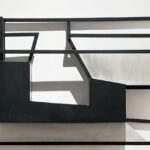 Stretcher Series 1
Stretcher Series 1
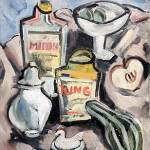 Still Life
Still Life
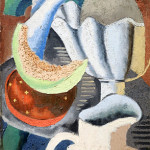 Still Life
Still Life
 Dark Harmony
Dark Harmony